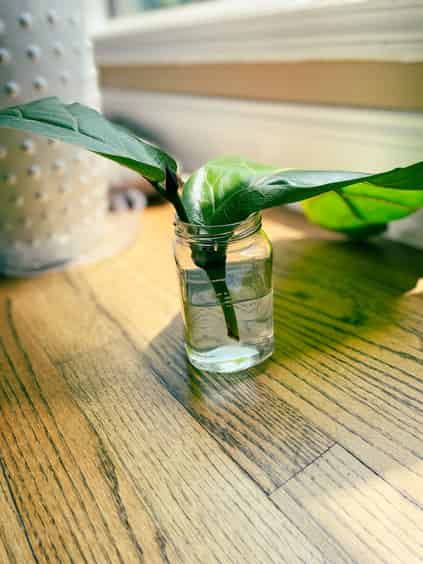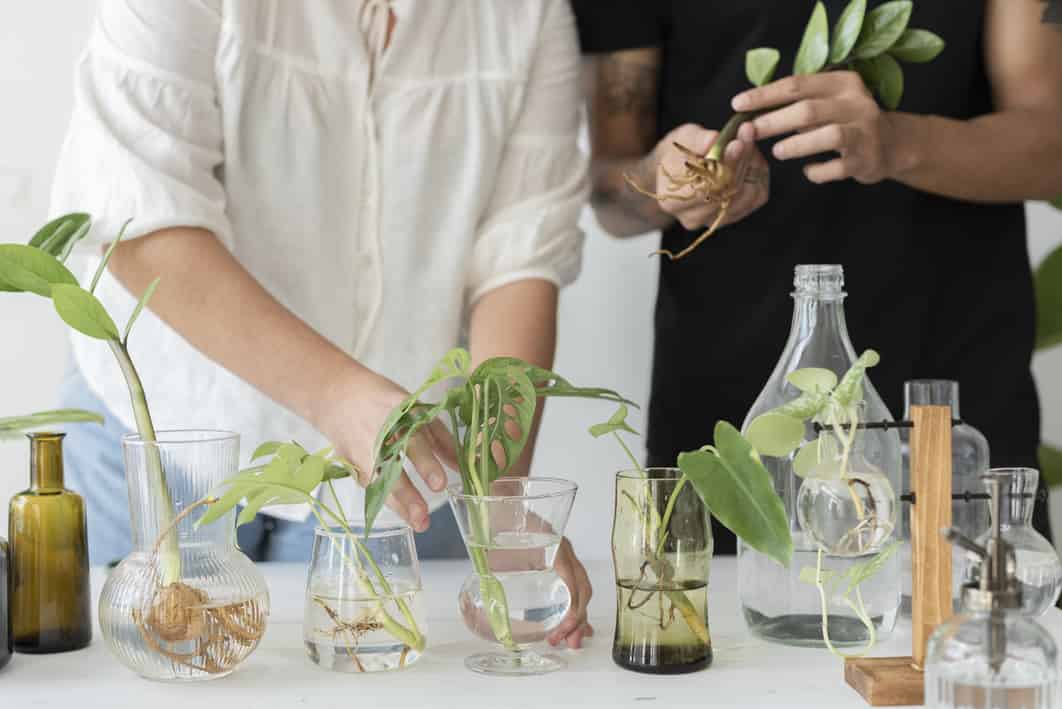There are many ways to propagate a plant, but one of the most fun and easy methods is to use cuttings. Cuttings are a great way to get more out of your plants, and can be a quick way to grow your garden. Today, we’ll look at everything you need to know to start growing plants from cuttings, and by the end you’ll be able to take your own and expand your garden.
One interesting note is that when you grow from a cutting you get a plant that is genetically identical to the parent. This is usually not of interest to small home growers, but certain industries benefit from this fact. At the very least it’s an interesting curiosity of cuttings.
When To Take Stem Cuttings?
You can take a cutting from your plant any time during its growing season. This is usually in the spring, summer, or early fall for most plants.
You want to avoid taking the cutting during the winter, especially for plants that go through periods of dormancy. During this time, the plants aren’t actively growing, and taking the cutting can permanently harm them as they are unable to recover from the stress.
That in mind, you should also take extra care to watch a plant you’ve taken a cutting from. It can be stressful, and for a few weeks after the plant may need extra water or nutrients to recover.
What Types Of Plants Can I Take Cuttings From?
The majority of commonly grown houseplants are suitable candidates for cuttings. In general, most soft stemmed plants are able to be grown from cuttings.
Here’s a good article that details a large list of suitable plants. Bear in mind that no list could completely cover all the plants that you can take cuttings from; there’s simply so many of them. Before going ahead, give a quick search for “Your plant + grow from cuttings”, there’s likely resources available to help you that will provide plant specific tips.
How To Take a Cutting
With that little intro out of the way, let’s walk through the process of actually taking a cutting.
Select Your Plant
The first step is to select a plant that is suitable for a cutting. As noted above, look to take the cutting from a soft-stemmed plant that is actively growing; usually during the spring or summer.
A suitable plant should also be healthy and free of any disease and pests. The cutting will weaken the plant a bit, so any existing issues will only get worse after the cutting. Look for a plant that is healthy and has lots of rich, green growth.
Lastly, make sure the plant is large enough that the cutting won’t harm it. Small plants are generally poor candidates for cuttings as you’ll end up taking too much of the plant. Make sure your cutting is only a small portion of the total plant.
Prepare Your Container
Once you’re ready to take the cutting, you should first start by preparing your container. Depending on your plant, there are generally two ways most gardeners start their cuttings.
The first, and probably the easiest, is to use a standard container with a soilless mix. These types of mixes are well draining, but hold enough moisture to encourage rooting. Start with this mix in a small container, you’ll be transplanting your cutting in the future so container size isn’t really important here.
You can also grow some plant’s cuttings directly in water. Simply place the cutting in a small jar filled partially with water and leave it in a sunny spot. Use only filtered water, and make sure to change every other day.

Above, an example of a fiddle leaf fig cutting in water.
Each of these are viable options for most plants, so it comes down to grower preference and what you have available.
Take The Cutting
With the container prepared, it’s time to take the cutting. Take a sharp tool like scissors or a razor and disinfect it to prevent contamination. Look for a younger stem that has a small bump also called the node. This is where your roots will emerge from. You should also look to have 2-3 leaves on your stems cutting.
Using your disinfected tool, make a quick, clean cut taking off the selected stem. 4-6” of stem is usually enough given it has the stem node and a few leaves.
Prepare Your Stem
With your cutting in hand, make a small cut into the node of the stem. This will help encourage root growth. You don’t want to cut through, but instead just lightly score it.
You also want to remove all but 2-3 leaves. The leaves are needed for the plant to photosynthesize and produce energy, but too many will sap energy from root growth. An ideal cutting has only a few leaves.
Plant The Cutting
The last piece of prep you can do before planting is to use some rooting hormone. You can add this directly to the stem, or into the water of your container, which helps the plant grow roots. It’s not necessary, but it certainly helps speed up the process.
Now, simply place your cutting in its chosen container. If growing in a soilless medium, bore a small hole into the soil and place the stem in gently. You can grow multiple per container, but give a few inches between each cutting.
Watch Your Cutting and Transplant
Over the next few weeks monitor your plants for any signs of pests or disease and remove any that are showing these signs. During this time, keep the soil moist, warm, and in a spot that gets a good amount of in-direct, bright sunlight. You can also cover the plant with plastic to help lock in moisture and humidity. Make sure this isn’t a tight fit though, you still want to allow airflow to prevent rotting.
It generally takes about 2-3 weeks for root growth after planting and you can begin checking at this time. Give your cutting a very light tug being careful not to pull the plant out if the roots haven’t set yet. If you feel a bit of resistance this means that the roots are grown, and you can now transplant your cutting to its permanent home.
For plants grown in water you should be able to see when the roots start to grow. Wait until they’re about 2-3 inches long before you transplant the plant.
Growing Plants From Cuttings
Growing from cuttings is a great way to recycle your existing plant and get more from what you have. It may be a bit tricky at first, but growing from cuttings only gets easier the more you do it. If you grow plants from cuttings let us know what type and how it went.
Growing Plants From Cuttings FAQ
Can You Put Cuttings Directly Into Soil?
Technically yes you can, but it’s better to start with a soiless mix as they are better suited to the conditions for initial root growth.
Can You Grow Cuttings In Water?
Yes, many cuttings can be placed directly into water until their roots grow. When doing this, switch out the water every 2-3 days.
Do You Need To Fertilize Cuttings?
No, but you can use a rooting hormone to help speed up the process.
What Conditions Should a Cutting Be Given?
You want to make sure their medium remains moist and they are in a warm, humid environment. You should also give them several hours of bright but in-direct sunlight per day.







